Whether it’s hunting, fishing, or those when you need to protect yourself in the woods, a pocket knife will drastically increase your chances of coming out alive. These tools may seem tiny, but with sharp blades in place, they can handle almost anything your ordinary knife can (and even better).
With constant innovation over the years, pocket knives today come in different handy designs and pocket-friendly sizes. With this, they are able to easily go unnoticeable while sitting in the comfort of your pocket. They have texturing in their handles for a more secure grip, with light material for easy portability. Perhaps the most convenient feature is how they retract into a plastic handle with a safety that prevents it from pricking you while in your pocket.
That said, out of the multitudes of pocket knives out there, it may be hard getting the right one with all the nice modern features. For this reason, we have made our list of the best pocket knives out there to make your selection smoother.
Top 10 Pocket Knives Of 2020 Reviewed
1. Kershaw Blur Black Everyday Carry Pocket Knife
 Pocket Knife for the Money
Pocket Knife for the Money
This is, in our humble opinion, the best EDC knife for anyone who wants a top quality pocket knife for a variety of jobs. It’s sleek, simple, and, though small, quite a badass to look at. It has an overall length of 7.875 inches while the blade is just within the sweet spot at 3.375 inches. The blade style is a drop point which, if you’ve read our guide, you’ll know is the most versatile style there is. It features SpeedSafe Assisted Opening and a thumb stud to make opening the knife one-handed a breeze. The locking mechanism is a Liner Lock. There’s a reversible pocket clip that allows you to change the orientation of the knife in your pocket.
However, it doesn’t really sit deep in your pocket. Not a deal-breaker but something to take note of. The 6061-T6 anodized aluminum handle features Trac-Tec inserts making this very grippy even when wet. The blade itself is made of Sandvik 14C28N stainless blade steel with a Diamond-Like Carbon (DLC) coating to increase rust resistance. One thing that could be improved is the thumb stud. It’s great for its purpose. However, it is sharp and can “stab” your fingers when you’re reaching into your pocket. Also, some owners have reported that the coating wears off easily.
Pros:
- Very grippy handle
- Lightweight
- Good locking mechanism
Cons:
- Not a deep carry clip
- Sharp thumb stud
- The coating comes off easily
2.. Grand Way Gentleman’s Folding Knife
 Best Pocket Knife with Wood Handle
Best Pocket Knife with Wood Handle
Stainless steel is the standard material for knives. It is corrosion resistant and has the ability to retain a sharp cutting edge for a long time. In addition to being made from stainless steel, the Grand Way Gentleman’s Folding Knife features an elegant wooden handle. That why we consider it to be the best pocket knife with wood handle. The folding knife locks in to enable you to use it as a pocket knife.
This knife is designed for use by men who like outdoor activities such as sport hunting. Once you pull the blade out of the handle, it will be held in place in position by a linear lock. The grip is so firm that you would mistake it to be a non-folding knife. It comes with a classic drop point, which creates a balance between sharpness and strength. Once you get this knife, you wouldn’t want another.
Pros:
- Comes with an elegant wooden handle
- The liner lock holds the outstretched knife firmly in place
- The blade is made of strong, durable stainless steel
Cons:
- Reports of the pictures about the knife being deceptive
- Some users said the blade is wobbly
- Reports of a dull and scratched metal
3. Victorinox SwissChamp
 Pocket Knife Multitool
Pocket Knife Multitool
A list of the best pocket knives ever would never be complete without a Swiss Army Knife in it. When it comes to multi-tool pocket knives, there’s no other choice but this one. The Swiss Champ is 3 ½ inches of handy tool heaven. You get 33 functions that will allow you to perform everyday and not-so-everyday tasks. Whether it’s opening your next Amazon purchase or unhooking your biggest catch, the Swiss Champ has got your back. The blades even come sharpened out of the box! However, there are certain drawbacks to this pocket knife. It can be a bit bulky. There’s no locking mechanism that will stop the blade or tool from closing while you’re using it. Also, this does not have a one-handed opening mechanism.
Pros:
- 33 functions
- Sharp out of the box
- Comes in several colors aside from classic red
Cons:
- No locking mechanism
- A bit bulky
- Not a one-handed mechanism
4. Spyderco Tenacious
 Pocket Knife Under 50
Pocket Knife Under 50
This leaf point blade from Spyderco is a good choice for a mid-sized EDC if you’re on a limited budget. The 3.39-inch blade is made of 8Cr13MoV steel with a full flat grind and a satin finish. The Rockwell Hardness is at 57-59 HRC. The handle is 4.4 inches long and 0.455 inches thick with G10 scales. The pocket clip can be attached at 4 different positions – tip up or down and left or right hand. Now, the steel isn’t what most knife lovers would prefer. It will require frequent sharpening but it does sharpen really well and has good edge retention.
It looks like a small chef’s knife that can easily do the job of one despite its small size. While it’s no drop point, there’s enough of a belly to allow you to perform most everyday tasks. The handel js textured enough to provide you with a good grip but not enough to shred your pocket. There’s enough jimping on the thumb ramp to give you more control when wielding the knife. The pocket clip allows you to carry the knife low in your pocket but it does come loose. One thing that makes knife lovers think twice about this budget pocket knife is the fact that it was made in China. But if you really look at this knife, it’s one that was made to take a beating. For the price and performance, you definitely won’t be complaining.
Pros:
- Easy to sharpen
- G10 handle
- Great heat finish
Cons:
- Pocket clip comes loose
- Weak steel
- Made in China
5. Benchmade – Mini Griptilian 556 Knife, Drop-Point
 Pocket Knife to Hold an Edge
Pocket Knife to Hold an Edge
Don’t underestimate the Benchmade Mini Griptilian. It may be small (only 2.91 inches of blade) but it sure does the job. It’s definitely small enough to comfortably fit in your pocket and not raise any eyebrows when you whip it out. But it’s not too small that it can’t do much of the tasks its big brother can do. Made of 154CM (58-61 HRC) stainless steel, the blade is tough, rust-resistant, and has good edge retention. The drop point style makes this ideal for everyday tasks.
What’s great about this knife is that it does come in several styles – plain edge and serrated, black or satin finish, drop point or tanto. The fiberglass-reinforced nylon handles look cool and fit well in your hand. Though there are some who feel these scales are inferior to the G10. The thumb ramp, jimping, and choil plus the textured scales ensure the knife never slips from your fingers unintentionally. The pocket clip allows for ambidextrous tip up carry though it doesn’t sit deep in your pocket. The Axis lock works great though international owners have complained about sending the entire knife back to the US for repair when it fails. Benchmade does provide a limited Lifetime Warranty and LifeSharp Service for this knife.
Pros:
- Lifetime Warranty and LifeSharp Service
- 154CM stainless steel
- High quality pocket knife
Cons:
- Some prefer G10 scales
- Expensive
- May be too small for some
6. CRKT Drifter G10 Plain Edge Folding Knife
 Pocket Knife on a Budget
Pocket Knife on a Budget
If you want a pocket knife that you’d never feel guilty about beating up day after day, then this is the one you’re looking for. At a little under $30, you get a 2.75-inch drop point blade made from 8Cr14MoV stainless steel with a gray titanium nitride finish, black G10 scales, and a black stainless steel clip. Now, one thing we don’t like is that the clip only allows for tip down, right hand carry. So lefties need to find another clip for this knife. Or, you can just carry it loose. Even in dress pants, this knife won’t show a bulge. Another drawback is that it’s not sharp out of the box. There’s also a slight recurve in the blade which makes this a slight pain to sharpen.
Pros:
- Extremely low priced
- Good basic pocket knife
- Small and discreet
Cons:
- Pocket clip is not reversible
- Not sharp out of the box
- Not easy to sharpen
7. SOG Folding Pocket Knife – Salute Tactical Knife
 Best Salute Tactical Knife
Best Salute Tactical Knife
Looking for the best tactical knife? If so, then the SOG Folding Pocket Knife is what you should buy. It is suitable for work, military assignments, and camping. We are talking about a flipper knife that is extremely easy to open, thanks to the adjustable sliding thumb stud. To hold an open knife in place, there is a Lockback knife mechanism. For that reason, you can use it to perform your tasks without worrying about the knife snapping back into place.
Like all the other SOG products, this knife is built to last. The only maintenance it requires is minimal sharpening, lubrication, and regular cleaning. But that is not all. When folded, the knife measures only 4.63 inches when closed and weighs just 4.2 ounces. Thus, it is small enough to carry in your pocket. It features scalloped grips, which enable you to firmly get a grip of it. The stainless steel blade is durable and remains sharp for a long time.
Pros:
- Features an adjustable sliding thumb stud for easy opening
- Locks in place while open
- Small and light enough to carry in a pocket
Cons:
- Difficult to open and close using one hand
- Complaints about it not being “grippy” enough
- The screws on the clip are of low quality
8. Cold Steel Micro Recon 1 Tanto Point
 Pocket Knife for Self-Defense
Pocket Knife for Self-Defense
The Cold Steel Micro Recon 1 Tanto Point is a “grippy” pocket knife that features a 2 3/8-inch handle. With such a miniature size, the knife can easily fit into your pocket. You may use it while out camping, traveling or hunting. It features a Japanese AUS 8A stainless steel blade that is coated with Tuff-Ex, to give it an elegant look. The ergonomically curved handle is rough on both sides to help you have a firm grip while using it.
Measuring 4 3/8 inches in length, the knife is big enough to perform most of your tasks. The blade itself is 2.5 millimeters thick and has the ability to remain sharp for a long time. It comes with a reversible thumb stud and has a Tri-ad Lock locking system, which is considered the market leader. Only that you will have to open it using both hands.
Pros:
- The rough handle gives a perfect grip
- The blade remains sharp for longer
- Has a market-leading locking system
Cons:
- Doesn’t have any liners
- Needs to hands to open
- May not be suitable for small hands
9. SOG Aegis Assisted Folding Knife
 Pocket Knife for Law Enforcement
Pocket Knife for Law Enforcement
This pocket knife from SOG features its patented assisted opening mechanism and unique reversible deep carry pocket clip that we loved in the Flash II. But that’s not why it’s on our list. For an EDC, this knife is a medium sized, lightweight option. It has a clip point AUS-8 3.5-inch blade with black TiNi finish and an overall length of 8.25 inches. The tip of the blade is excellent for piercing enemies should the need arise while the belly is ample enough to effectively perform everyday tasks.
It weighs 3.1 ounces so the size doesn’t really affect the weight much to our everlasting delight. The impact resistant glass-reinforced nylon handles with the checkered Digi-Grip allows for a sure grip at all times. The Piston lock is very secure with the added safety lock to prevent accidental openings. At this price point, the Aegus is definitely a lot of knife for your buck. Just a couple of things to note. The clip features a SOG logo cutout that can catch on your clothes. It can be slightly hard to close one-handed and there are no liners.
Pros:
- Deep carry pocket clip
- Well-balanced
- Lightweight, medium-sized knife
Cons:
- SOG cutout on the clip can fray your clothes
- Hard to close one-handed
- No liners
10. Case Mini Trapper Pocket Knife
 Pocket Knife to Collect
Pocket Knife to Collect
The Mini Trapper is perfect for those who want a traditional EDC that will also work well for hunting and trapping small game. This is a handcrafted pocket knife that features two blades – a clip point blade and a spey blade. The blades are 2.70 inches long and made from Tru-Sharp surgical steel. The overall closed length is 3.5 inches and the weight is 2.7 ounces. The knife is offered with a variety of handle types including black G10 and blue bone handles.
Aesthetically speaking, this pocket knife is a beauty. And its versatility is nothing to scoff at. However, there are drawbacks to this classic knife. First, it can get slippery when wet (for certain handles). Second, the composition of the steel used is never clearly stated which could mean anything. It does sharpen easily so that’s good but it doesn’t come sharp out of the box. And then there’s the locking mechanism – a slipjoint. The same thing you’d see in a Swiss Army knife. For safety reasons, we’d like a better locking mechanism. Not a deal-breaker really but definitely a drawback.
Pros:
- Beautiful pocket knife
- Traditional style
- Dual blades
Cons:
- Slipjoint
- Can get slippery in your hand in wet conditions
- Unclear steel composition
How to Choose the Best Pocket Knife: The Ultimate Buying Guide
Because you never know when you’ll need to MacGyver yourself out of a situation, a pocket knife is a handy tool to have. It’s reasonable to assume that there’s gotta be a pocket knife out there that are considered the best of the best. But any knife expert will tell you that there is no one knife to rule them all. This is because a lot of factors are involved in choosing the perfect pocket knife (or any knife, for that matter) including the purpose and personal preference.
What’s good for one man (or woman) isn’t always going to be great for someone else. To find out which pocket knife will work best for you, you’ll need to understand what important features to look out for.
How Many Blades do you Need in Your Pocket Knife?
The number of blades in your pocket knife will depend on what you want to use this tool for. Single-blade pocket knives feature only one blade (as the name already states) which means that the manufacturer was able to focus on making the blade as well as the locking mechanism stronger and sturdier to ensure that it can handle demanding work. The disadvantage to this kind of pocket knife is the lack of versatility. It’s great for an all-purpose knife but if you want to be able to also carve wood or skin animals, then you’ll want something else.
Multi-blade pocket knives, as the name also states, has more than one blade to help you perform a variety of tasks. Generally, this type of pocket knife features two to four blades which will give you the option to cut, slice, carve, and/or skin your game should the need ever arise. While you do get the advantage of versatility, one big disadvantage with this kind of pocket knife is the fact that strength and durability are compromised compared to a single-blade pocket knife.
Multi-tool pocket knives like Swiss Army knives allows you to carry more than just a knife in your pocket. If you’re a person who needs a whole range of tools from corkscrews and can openers to saws, tweezers, and toothpicks, then this is the pocket knife for you. Keep in mind that this kind of pocket knife requires you to open and close the tools with both hands. Also, this kind of pocket knife is usually bulkier and lacks a locking mechanism.
What Kind of Edge Should you Get?
All knives come in a variety of edges: plain, serrated, and combo.
In general, plain edges are the best choice since they’re easier to maintain (i.e. sharpen) and gives you better control and accuracy when cutting, slicing, carving, or skinning. However, it isn’t as great at performing pull cuts (when you pull the knife towards you to cut something such as rope or bread). It will do the job, just not as efficiently as a serrated edge.
Now, serrated edges are perfect for cutting tougher materials such as cords or seatbelts. However, they’re a pain in the ass to sharpen. Unless you’re an expert, you’ll have to send the blade to the manufacturer or a professional for sharpening. Also, the uses of a serrated edge are limited.
Some blades feature a combination of the two edges, also called partially serrated or combo edge. Now, it may offer you the “best of both worlds” because you get the efficiency of serrated edges for pull cuts and the versatility of plain edges for push cuts.
However, there are certain disadvantages. First, you’ll still need a professional to keep the serrated edge sharp. Second, the amount of real estate given to a certain edge is smaller which means less cutting surface. The blade’s edge needs to be a certain length in order to be effective. Pocket knives with blades that are 3 inches or less in length will not be as effective in performing any of the tasks you require it to do. If you prefer this type of edge, make sure that the placement of the edges are ideal for the tasks you have in mind.
How Long Should Your Blade be?
When it comes to pocket knives, bigger is not always better. Naturally, a longer blade will be more efficient and able to handle more tasks compared to a smaller blade. Those with blades that are longer than 4 inches often have the versatility and functionality of a fixed blade knife but with the added advantage of being able to carry it discreetly. However, they aren’t always discreet enough. These knives tend to be bulkier. And, they’re not always legal; local regulations may prevent you from carrying a pocket knife this big.
The sweet spot for blade length in pocket knives is between 2.75 inches to 4 inches. These knives are long enough to efficiently handle a wide variety of tasks but still small enough to be discreetly carried everywhere. Also, these pocket knives typically use a locking mechanism that will allow you to perform strenuous tasks without having to worry that the knife will fold and cut your fingers off. The only disadvantage to this blade length is the fact that not all states will allow it. For example, the state of California does not allow blades that are longer than 2.5 inches.
If you want to make sure that you are compliant with the knife laws of your state, then your best bet is to go with the really small blades (less than 2.75 inches). Aside from ensuring that the knife is most probably legal everywhere in the country, you also get the added benefit of portability. It’s much easier to carry a small blade than a large one. Plus, it’s also more discreet and less bulky. However, some blades of this length do not feature a locking mechanism. Also, small blades tend to be less sturdy and less versatile in comparison to larger blades. Knife experts recommend this size if you’re only planning on performing basic tasks like opening your Amazon packages or cutting string.
What Type/Style of Blade Should you Get?
For some of us, all knives look alike. There’s a sharp edge, a pointy end, and a handle. Unfortunately, not all blades are created equal. This means that a particular blade style or type will have a certain “edge” over others in specific tasks. Make sure that you choose the blade style that suits your purpose.
Clip Point: a popular blade style with an unsharpened back with a concave shape near the tip and a deep belly at the front of the blade. This type of blade is good for everyday tasks as well as hunting.
Drop Point: the best all-purpose blade style due to its versatility. The unsharpened back runs straight from the handle until it slopes down towards the sharpened point. Great for slicing, skinning, cutting, when you are out camping etc.
Tanto Point: the tip looks like a chisel or a samurai sword. Designed for piercing tough materials and push cuts, this blade style is not ideal for everyday tasks.
Straight Back Blade: features a straight dull back with a curved edge. Perfect for chopping, cutting, and slicing because you’re able to put more pressure on the back of the blade.
Spear Point: while this was designed with a very sharp point for piercing, the presence of the belly allows you to do a bit of slicing with this blade. However, it isn’t as efficient at this task as a drop point or clip point blade.
Needle Point: symmetrically tapers into a thin point which makes this a great choice for piercing objects. However, the tip can easily break. This blade style is not ideal for slicing due to the lack of a belly.
Sheep’s foot: the dullness of the point makes this an ideal tool for emergency responders as it won’t accidentally stab victims while you saw away their seatbelt using the flat cutting edge. You can also use this blade style for whittling.
Trailing Point: ideal for skinning and slicing due to the large cutting area and deep belly. However, the tip is very weak and easily broken.
Pen Blade: typically found in multi-tool pocket knives such as Swiss Army knives. Traditionally, this style was used to sharpen quills or “pens” hence the name. While not sharp, it can still be used to perform small tasks.
Hawkbill: looking similar to a scythe or the curved shape of a hawk’s bill, this blade style is ideal for harvesting plants or cutting rope.
Wharncliffe: similar to a Sheep’s Foot blade, this style is ideal for carving wood and cutting. While the tasks it can perform are limited, this blade style is very easy to sharpen.
Spey-Point: initially designed to spey animals, this style is now found in hunting knives because it’s great for skinning.
What’s the Ideal Steel?
While survival knives are best made out of carbon steel, you’ll want something strong but more easily maintained for your everyday carry. This means that stainless steel is the best option. While it doesn’t hold an edge as long or as well as carbon steel, it is more resistant to rust and still durable.
Let’s Talk About the Handle
There are a variety of materials used to create handles of pocket knives and it can be overwhelming to read about them all. Generally, you’ll want a material that will provide you with a good grip even when wet. You’ll need to look for textured material such as the G10, Zytel, Micarta, Kraton, and wood.
How Does it Open?
Let’s face it. The speed with which you are able to open a knife can mean life or death in certain situations. It can also mean incredible convenience in performing mundane, everyday tasks. All of that means that the opening mechanism of a pocket knife should enable you to use your knife one-handed. Most pocket knives feature a thumb stud or hole which will allow you to use your thumb to flick the knife open while holding it in the same hand.
Some pocket knives utilize the assisted opening mechanism which is slightly similar to how a switchblade works. You place a certain amount of pressure to open the blade similar to how you’d use a switchblade. After you exert the pressure and open it about a third of the way, a spring mechanism “springs” into action, opening the blade the rest of the way. While this may seem a cool feature to some, the addition of this mechanism is just unnecessary and has a likelihood of failure.
Swiss Army knives and other multi-tool pocket knives typically require you to use two hands. You place your fingernail in the nail nick (a small groove in the blade) while you hold the pocket knife in your other hand.
How Does it Lock?
Naturally, you wouldn’t want the knife to suddenly fold while you’re using it. Your poor fingers. So, a locking mechanism is a necessary feature. Now, manufacturers make use of different locking mechanisms with each one of them claiming that theirs is the best one in the market. Most mechanisms such as frame locks, liner locks, lock backs, and mid locks require you to put some pressure on the lock in order to put the blade back into the handle. However, certain pocket knives such as Swiss Army knives use a slipjoint which doesn’t really “lock” like the others. With this kind of knife, you pull the blade open, exerting more effort to overcome the pressure of the spring. To close it, the force of the spring snaps the blade back into the handle which means you better make sure your fingers aren’t in the way.
In Conclusion
The pocket knife you eventually choose to make your own is really a matter of purpose and preference. You’re going to be the one using it to do everyday tasks, whether it’s cutting open boxes and strings or doing some hunting and fishing to feed your family. Some just like having a handy tool that can be used whenever the need arises, like cutting a juicy steak in your favorite restaurant. Whatever you do end up choosing, just remember this: a knife in hand is better than no knife at all.
Sources
https://www.artofmanliness.com/2008/04/01/every-man-should-carry-a-pocket-knife/
http://www.knifeup.com/finally-i-found-the-best-pocket-knife-in-the-world/


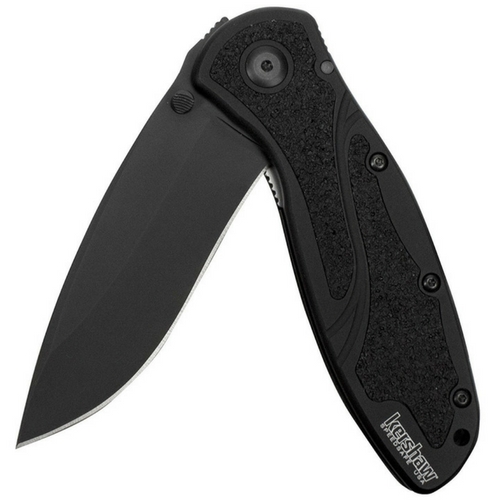
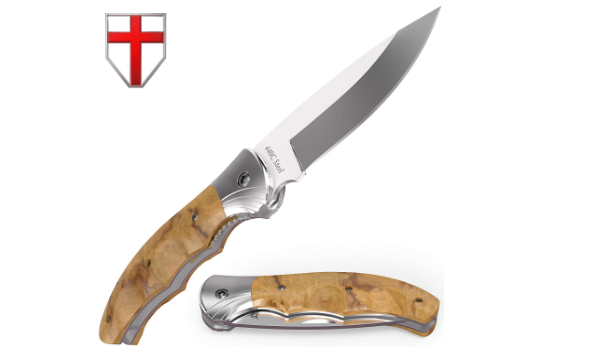
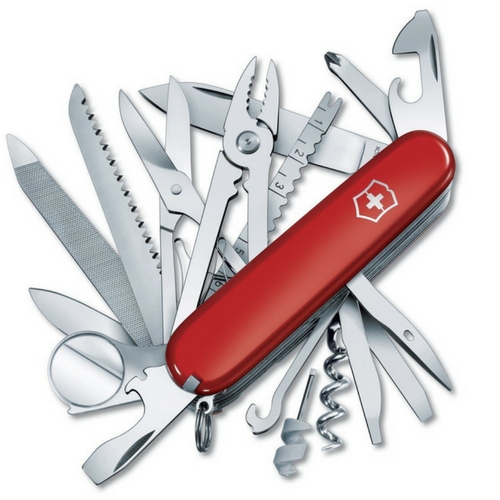


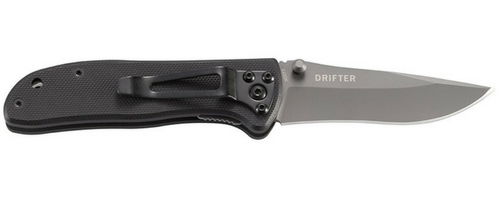
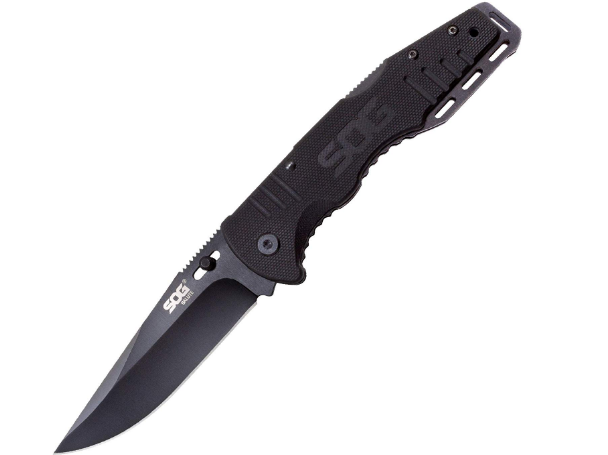
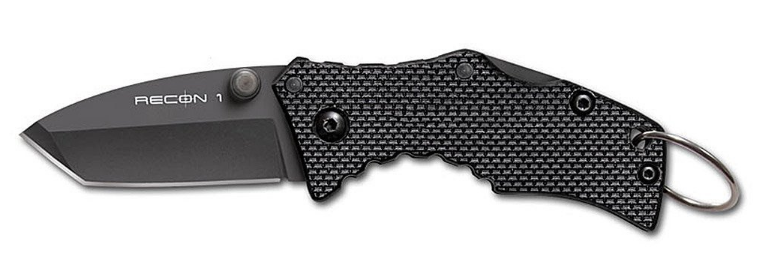
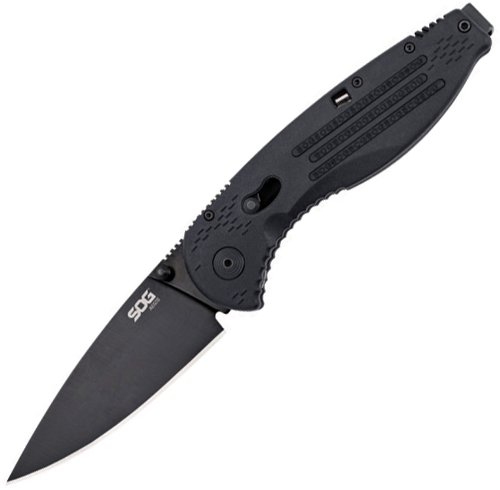
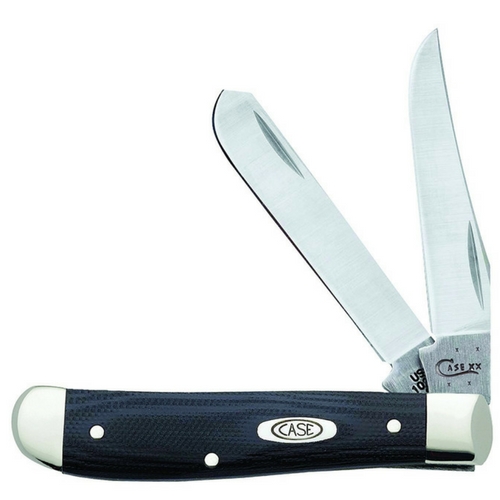
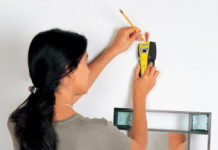
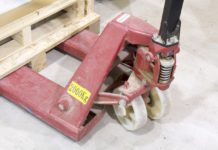

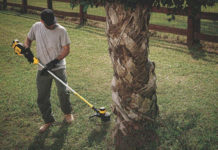
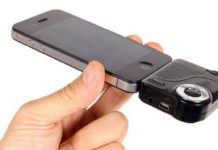






![Best Crochet Hooks for Beginners and Pros [2020 Update] best crochet books](https://www.awebtoknow.com/wp-content/uploads/2018/01/best-crochet-books-100x70.jpg)


